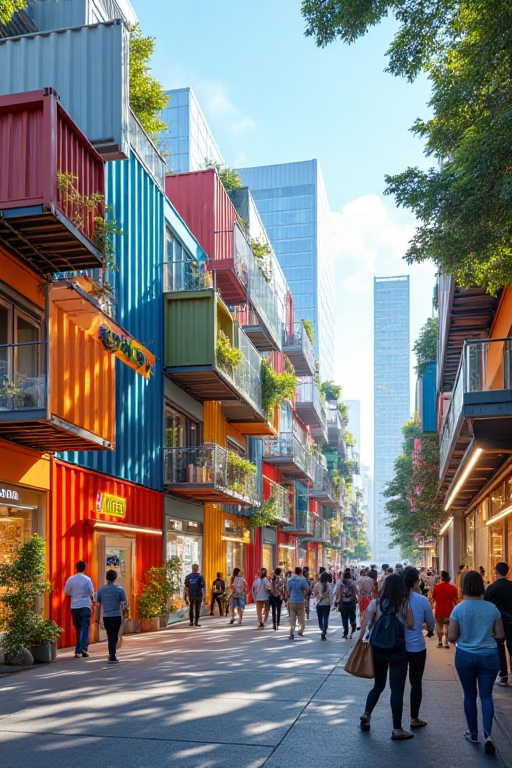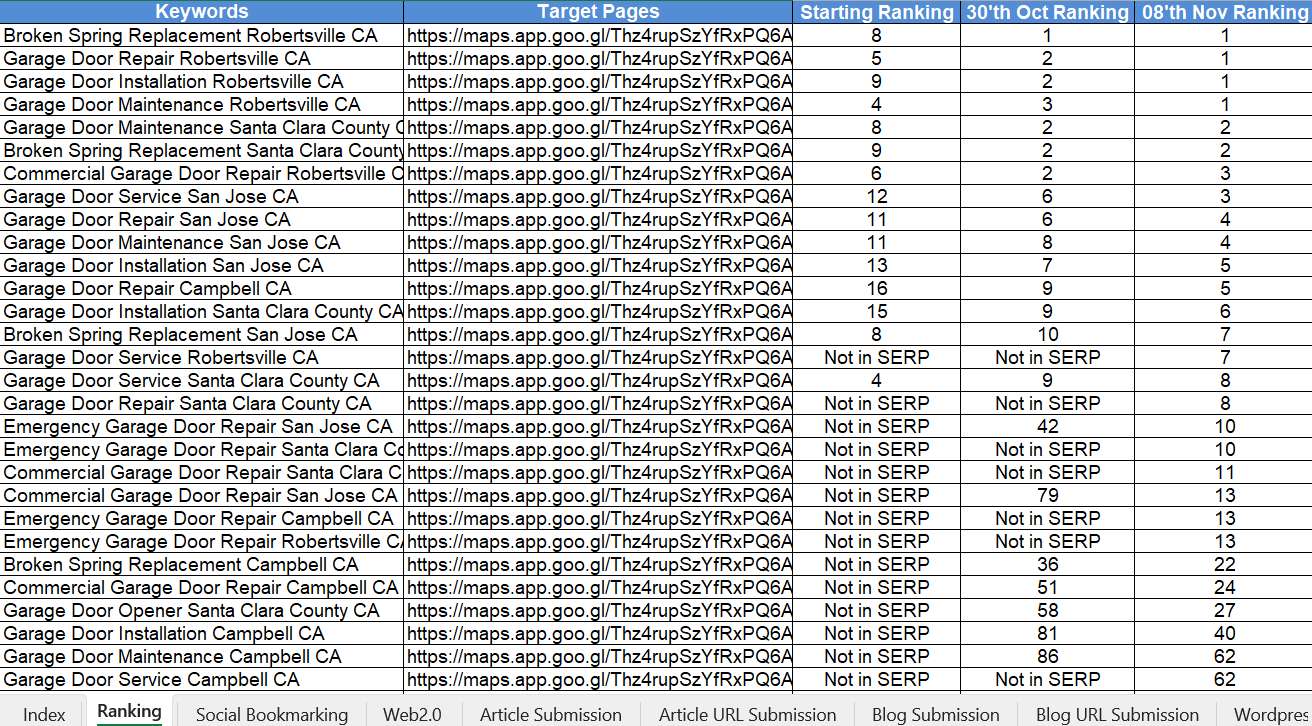Why Shipping Containers Are a Hot Trend for 2025
Why Shipping Containers Are a Hot Trend for 2025
Discover the innovative uses, sustainability benefits, and design inspirations driving the popularity of shipping containers in 2025
As we step into 2025, shipping containers have solidified their position as a versatile and sustainable solution for various construction and design projects. From housing to commercial spaces, the adaptability and eco-friendly nature of shipping containers make them an attractive choice for architects, builders, and entrepreneurs alike. This comprehensive guide delves into why shipping containers are a hot trend for 2025, exploring their innovative applications, environmental benefits, and the design inspirations fueling their rise in popularity.
1. Innovation in Uses
Shipping containers have transcended their original purpose of transporting goods, finding new life in diverse applications. Their modular nature and structural integrity make them ideal for various innovative uses in 2025.
Residential Housing
One of the most prominent trends is the use of shipping containers in residential housing. Container homes offer a cost-effective and quick construction method, allowing homeowners to customize their living spaces according to their needs. The ability to stack and combine containers enables the creation of multi-story homes, expanding living areas without significant additional costs.
Commercial Spaces
Shipping containers are increasingly being used to create commercial spaces such as offices, cafes, and retail stores. Their portability and ease of assembly make them a popular choice for pop-up businesses and permanent establishments alike. Additionally, container-based commercial spaces can be easily relocated or reconfigured, providing businesses with flexibility to adapt to changing market demands.
Educational Facilities
Innovative educational institutions are adopting shipping containers to build classrooms, laboratories, and libraries. These container-based facilities offer a scalable solution to address the growing demand for educational infrastructure, particularly in remote or underserved areas. The sturdy construction ensures longevity, while the modular design allows for future expansions.
Healthcare Facilities
In response to global health challenges, shipping containers are being utilized to create temporary and permanent healthcare facilities. Container-based clinics and hospitals can be quickly deployed in disaster-stricken areas or regions with limited medical infrastructure, providing essential healthcare services where they are most needed.
Recreational Spaces
Shipping containers are also making their mark in the recreational sector, being transformed into gyms, spas, and recreational centers. Their unique aesthetic appeal and functional design make them attractive venues for leisure activities, offering a modern and industrial charm that resonates with contemporary design trends.
2. Sustainability Benefits
The environmental benefits of using shipping containers are a significant factor contributing to their rising popularity in 2025. Their eco-friendly attributes align with the global push towards sustainability and green building practices.
Recycling and Repurposing
Shipping containers are essentially repurposed steel boxes, which means they inherently promote recycling. By transforming used containers into functional buildings, we reduce the demand for new construction materials, thereby minimizing the environmental footprint associated with manufacturing and resource extraction.
Reduced Construction Waste
Traditional construction often generates substantial waste from materials like wood, concrete, and steel. Shipping container projects produce significantly less waste since the containers themselves serve as the primary structure. Any additional materials used for customization are typically minimal and can be sourced sustainably.
Energy Efficiency
Shipping container buildings can be designed to be highly energy-efficient. Proper insulation, energy-efficient windows, and the integration of renewable energy sources like solar panels contribute to lower energy consumption. This not only reduces operational costs but also lessens the environmental impact of the building.
Durability and Longevity
The robust construction of shipping containers ensures that structures built from them are durable and long-lasting. This longevity reduces the need for frequent repairs and replacements, further contributing to sustainability by decreasing the overall resource consumption over the building's lifecycle.
Minimal Land Disruption
Shipping container projects often require less extensive groundwork compared to traditional construction. This minimizes land disruption and preserves the natural environment around the building site, making container-based structures a more sustainable option in environmentally sensitive areas.
3. Design Inspirations
The aesthetic versatility of shipping containers allows for a wide range of design possibilities. In 2025, designers and architects are pushing the boundaries of what's possible with container-based structures, blending functionality with artistic expression.
Modern Minimalism
Modern minimalist designs emphasize clean lines, open spaces, and simplicity. Shipping containers lend themselves well to this style, as their straightforward structure can be seamlessly integrated into minimalist architectural concepts. Large windows, sliding doors, and open floor plans enhance the airy and uncluttered feel of minimalist container buildings.
Industrial Chic
The industrial chic trend capitalizes on the raw, unfinished look of shipping containers. Exposed steel beams, concrete floors, and reclaimed wood accents create a rugged yet stylish aesthetic. This design approach celebrates the container's original purpose while adding a touch of modern sophistication.
Eco-Friendly Green Roofs
Incorporating green roofs into shipping container designs not only enhances their aesthetic appeal but also contributes to environmental sustainability. Green roofs provide natural insulation, reduce energy consumption, and promote biodiversity by supporting plant life.
Hybrid Structures
Hybrid structures combine shipping containers with traditional building materials like wood, glass, and brick. This fusion creates visually striking buildings that offer the best of both worlds—container durability and the warmth and texture of conventional materials.
Modular and Expandable Designs
One of the significant advantages of shipping containers is their modularity. Designers are creating expandable structures where containers can be added or rearranged to accommodate changing needs. This flexibility is ideal for growing businesses, evolving families, and dynamic urban environments.
4. Affordability and Efficiency
Shipping containers offer a cost-effective alternative to traditional construction methods. Their affordability, coupled with the efficiency they bring to building projects, makes them an appealing choice for various applications.
Lower Material Costs
The cost of acquiring and modifying shipping containers is generally lower than purchasing and processing traditional construction materials. Containers are readily available and can be sourced relatively inexpensively, especially used ones that are repurposed for new projects.
Shorter Construction Timelines
Shipping container projects can be completed more quickly than traditional construction. Since the primary structure is already in place, the focus shifts to modifications and interior design, reducing the overall construction timeline. This speed can be particularly advantageous for commercial projects that need to open quickly.
Labor Efficiency
Shipping container construction often requires less labor than conventional building methods. The modular nature of containers simplifies the building process, allowing for more streamlined workflows and potentially lower labor costs.
Scalability
The modular design of shipping containers allows for easy scalability. Businesses can start with a single container and expand as needed by adding more units. This scalability is beneficial for startups and growing businesses that need to adjust their space requirements without significant upfront investments.
Energy and Resource Efficiency
Shipping container buildings can be designed to maximize energy and resource efficiency. Features such as solar panels, rainwater harvesting systems, and energy-efficient appliances contribute to reducing operational costs and promoting sustainable living or working environments.
5. Future Trends
As shipping containers continue to evolve in their applications, several emerging trends are shaping their future in 2025. These trends highlight the ongoing innovation and adaptability of container-based structures.
Smart Technology Integration
The integration of smart technologies into shipping container buildings is becoming increasingly prevalent. Smart home systems, automated climate control, and advanced security features enhance the functionality and convenience of container-based structures.
Vertical Living Spaces
Vertical stacking of shipping containers is gaining traction as a space-efficient solution for urban environments. Multi-story container buildings maximize limited land space, providing ample living or working areas without expanding the building's footprint.
Community and Co-Living Spaces
Shipping containers are being used to create community-focused and co-living spaces. These structures foster social interaction and collaboration, making them ideal for shared living arrangements, coworking spaces, and community centers.
Disaster Relief and Emergency Housing
In the wake of natural disasters and humanitarian crises, shipping containers offer a quick and efficient solution for emergency housing and relief shelters. Their portability and ease of deployment make them invaluable in providing immediate shelter and support to affected populations.
Innovative Transportation Solutions
Shipping containers are also being explored as components of innovative transportation solutions. Concepts like container trains, floating container cities, and container-based mobile offices exemplify the diverse potential of containers beyond static structures.
Conclusion
Shipping containers have undeniably become a hot trend for 2025, driven by their versatility, sustainability, affordability, and innovative design potential. From transforming residential spaces to creating functional commercial and community buildings, containers offer a dynamic solution that meets the evolving needs of modern society.
As we look ahead, the integration of smart technologies, emphasis on sustainability, and the pursuit of creative design will continue to propel shipping containers to the forefront of architectural innovation. Whether you're an architect, builder, or entrepreneur, embracing the shipping container trend can open up new opportunities for creating impactful and sustainable structures.
At Market Wiz, we are committed to helping you navigate and leverage these trends to maximize your project's success. Stay ahead of the curve by adopting shipping container solutions that combine functionality, aesthetics, and environmental responsibility.
Frequently Asked Questions (Q&A)
1. Why are shipping containers becoming a popular trend in 2025?
Shipping containers are gaining popularity in 2025 due to their versatility, sustainability, affordability, and the innovative designs they enable. They offer a flexible solution for various applications, from housing to commercial spaces.
2. What are the sustainable benefits of using shipping containers?
Shipping containers are eco-friendly as they repurpose existing materials, reduce construction waste, and often require fewer resources to build. Their durability also contributes to long-lasting structures, minimizing environmental impact.
3. How can shipping containers be used in residential projects?
In residential projects, shipping containers can be transformed into affordable homes, guest houses, studios, and even multi-story living spaces. Their modular nature allows for creative designs and efficient space utilization.
4. What are some innovative commercial uses of shipping containers?
Commercially, shipping containers are used to create offices, retail stores, cafes, pop-up shops, and event venues. Their portability and modularity make them ideal for temporary or permanent commercial setups.
5. Are shipping container structures durable?
Yes, shipping containers are built to withstand harsh marine environments, making them highly durable and capable of enduring various weather conditions when properly maintained and modified.
6. What design inspirations are popular for shipping container projects?
Popular design inspirations include modern minimalist styles, eco-friendly green roofs, open-concept interiors, and the integration of natural materials like wood and glass to create aesthetically pleasing and functional spaces.
7. How cost-effective are shipping container projects compared to traditional construction?
Shipping container projects are generally more cost-effective than traditional construction due to lower material costs, reduced labor expenses, and shorter construction timelines. This makes them an attractive option for budget-conscious projects.
8. Can shipping containers be customized for specific needs?
Absolutely. Shipping containers can be customized with various modifications such as insulation, windows, doors, electrical wiring, plumbing, and interior design to meet specific requirements and preferences.
9. What are the challenges associated with using shipping containers?
Challenges include structural modifications, insulation and ventilation, obtaining necessary permits, and ensuring compliance with building codes. However, these can be overcome with proper planning and professional assistance.
10. How do shipping container structures impact the environment?
Shipping container structures have a lower environmental impact by recycling materials, reducing construction waste, and promoting energy-efficient designs. Their longevity also contributes to sustainability by minimizing the need for frequent replacements.
11. Are there any zoning regulations for shipping container buildings?
Zoning regulations for shipping container buildings vary by location. It's essential to consult local building codes and obtain necessary permits before embarking on a shipping container project to ensure compliance.
12. How can shipping containers be combined to create larger structures?
Shipping containers can be stacked, side by side, or arranged in creative configurations to form larger structures. This modular approach allows for scalable and customizable designs that can accommodate various space requirements.
13. What are the energy efficiency benefits of shipping container buildings?
Shipping container buildings can be designed to be highly energy-efficient. Proper insulation, energy-efficient windows, and the integration of renewable energy sources like solar panels contribute to lower energy consumption and reduce operational costs.
14. Can shipping containers be used for temporary structures?
Yes, shipping containers are ideal for temporary structures like pop-up shops, event venues, and emergency shelters due to their portability and ease of assembly and disassembly.
15. What maintenance is required for shipping container buildings?
Regular maintenance includes inspecting for rust, ensuring structural integrity, maintaining insulation and ventilation systems, and keeping electrical and plumbing systems in good working condition. Proper upkeep prolongs the lifespan of shipping container buildings.
16. How do shipping container homes compare to traditional homes in terms of resale value?
Resale value for shipping container homes can be comparable to traditional homes, especially if they are well-designed, maintained, and located in desirable areas. Unique designs and sustainable features can also enhance their market appeal.
17. Are there financing options available for shipping container projects?
Yes, financing options are available for shipping container projects, including traditional mortgages, personal loans, and specialized financing for alternative housing. It's important to work with lenders familiar with shipping container structures.
18. What are the aesthetic advantages of using shipping containers in design?
Shipping containers offer a modern, industrial aesthetic that can be seamlessly integrated into various architectural styles. Their clean lines and modular nature provide a unique canvas for creative and innovative designs.
19. How can shipping containers be made more comfortable for living?
Comfort can be enhanced by adding proper insulation, installing efficient heating and cooling systems, using high-quality flooring and lighting, and incorporating ergonomic and functional interior designs that maximize space.
20. What trends are emerging in shipping container architecture for 2025?
Emerging trends include sustainable designs with green roofs and solar panels, multi-functional spaces, integration of smart home technologies, and hybrid structures that combine shipping containers with traditional building materials for enhanced aesthetics and functionality.
25 Extra Keywords for Your Digital Marketing Agency Website
- Digital marketing strategies
- SEO services
- Social media management
- PPC advertising
- Content creation
- Brand development
- Online marketing solutions
- Email marketing campaigns
- Website design and development
- Conversion rate optimization
- Influencer marketing
- Video marketing services
- Local SEO optimization
- Mobile marketing
- E-commerce marketing
- Analytics and reporting
- Marketing automation
- Reputation management
- Graphic design services
- Digital advertising agency
- Search engine marketing
- Lead generation strategies
- Marketing consultation
- Retargeting campaigns
- Comprehensive marketing plans
Why Shipping Containers Are a Hot Trend for 2025 Read More »





